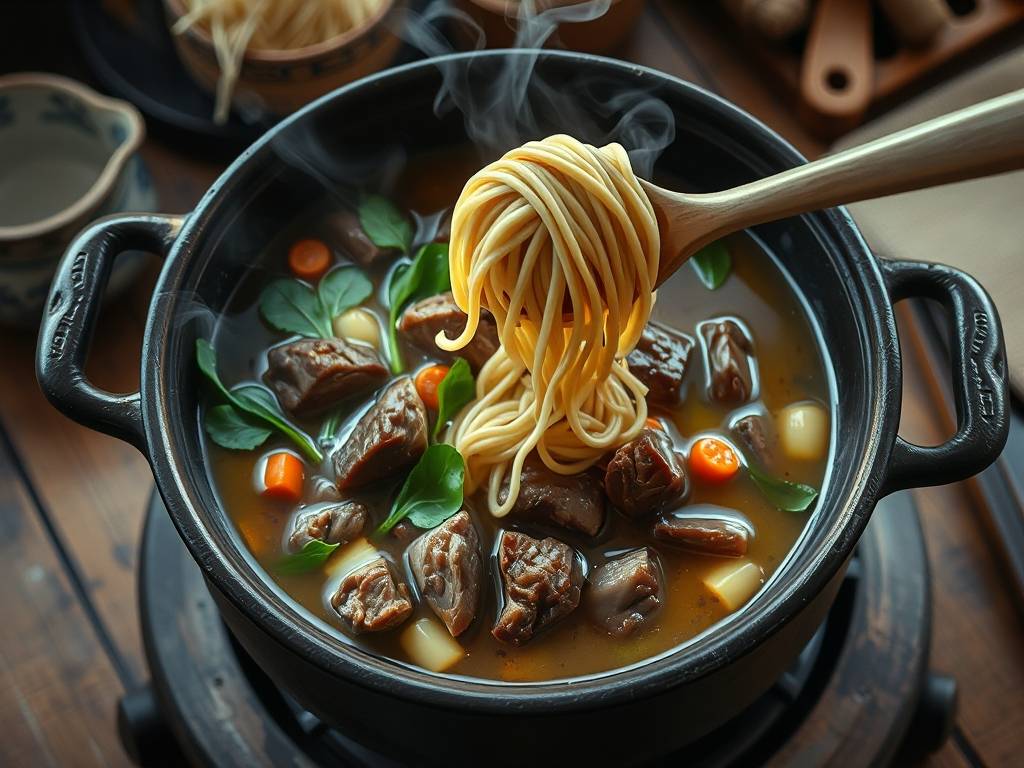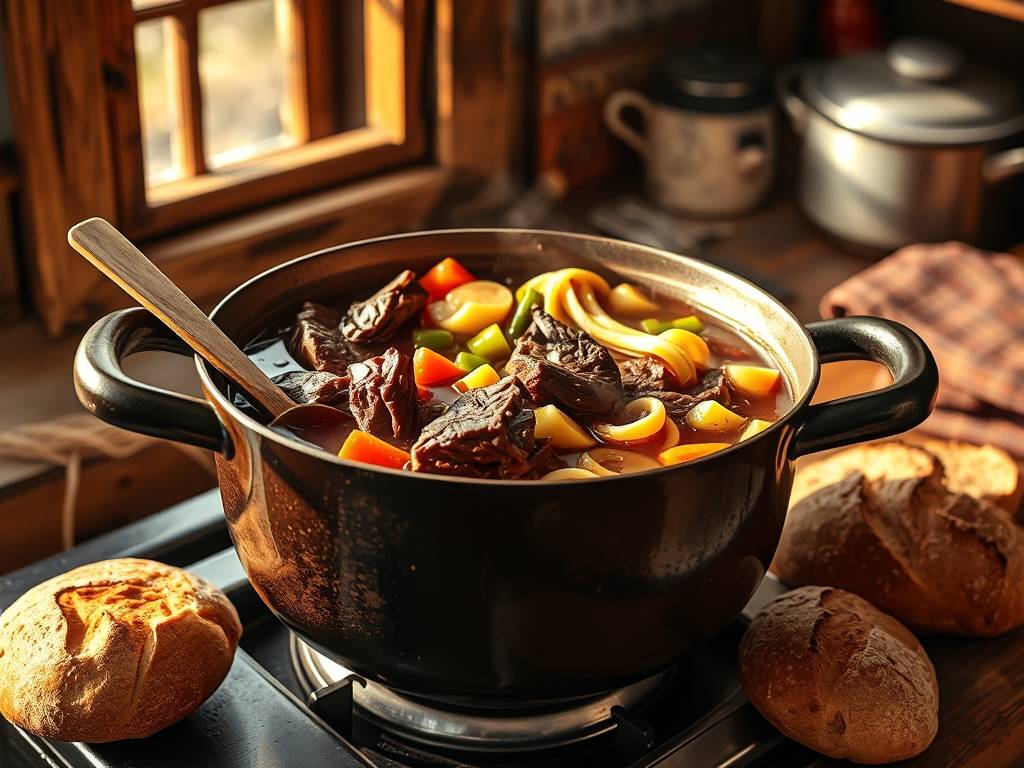The Ultimate Guide to Making Hearty Beef Noodle Soup
There's something deeply comforting about a bowl of beef noodle soup. The rich, savory broth, the tender chunks of slow-cooked beef, and the satisfying chew of noodles all come together to create a dish that warms both body and soul. While it might seem like a complex restaurant specialty, making exceptional beef noodle soup at home is entirely achievable with patience and the right techniques.
Selecting Your Ingredients
The foundation of great beef noodle soup begins with quality ingredients. For the beef, choose well-marbled cuts that benefit from long, slow cooking. Chuck roast, brisket, or short ribs are excellent choices as their connective tissues break down during cooking, creating incredibly tender meat and adding body to the broth.
When it comes to noodles, you have several options. Traditional Chinese wheat noodles, Japanese udon, or even thick Italian pasta like pappardelle all work wonderfully. The key is selecting noodles that can hold up to the robust broth without becoming mushy.

For vegetables, classic additions include carrots, daikon radish, bok choy, and scallions. These not only add flavor and nutrition but also provide textural contrast to the dish.
The Slow-Cooking Process
Step 1: Preparing the Beef Start by cutting 2-3 pounds of beef into 2-inch cubes. Pat them dry with paper towels – this ensures proper browning. Heat 2 tablespoons of vegetable oil in a heavy-bottomed pot or Dutch oven over medium-high heat. Working in batches to avoid overcrowding, brown the beef on all sides, developing that deep, caramelized flavor that forms the soul of your soup.
Step 2: Building Flavor Foundations Once all the beef is browned, reduce the heat to medium and add one large chopped onion, 3-4 sliced garlic cloves, and a 2-inch piece of ginger (sliced). Cook until fragrant, about 2 minutes. Deglaze the pot with ¼ cup of rice wine or dry sherry, scraping up all the browned bits from the bottom – these are flavor gold!
Add 6 cups of beef stock, 2 cups of water, ¼ cup of soy sauce, and 2 tablespoons of dark soy sauce for color. For additional depth, include a piece of dried orange peel, 2 star anise pods, and a cinnamon stick. These aromatics will infuse the broth with complex, warming notes.
Step 3: The Slow Simmer Return the beef to the pot and bring everything to a gentle simmer. Cover and reduce the heat to low. Let it cook for 2.5-3 hours, or until the beef is fork-tender. Alternatively, you can transfer everything to a slow cooker and cook on low for 6-8 hours. The low and slow approach allows the collagen in the beef to convert to gelatin, resulting in incredibly tender meat and a richer broth.
Preparing the Noodles and Vegetables
About 30 minutes before the beef is ready, prepare your vegetables. Peel and chop 2 large carrots and one daikon radish into chunks. Add these to the soup during the last 30 minutes of cooking so they become tender but not mushy.
For the noodles, cook them separately according to package directions. This prevents them from absorbing too much broth and becoming bloated. Choose thick, chewy noodles that can stand up to the rich soup. Fresh noodles typically cook in 3-5 minutes, while dried ones may take 8-12 minutes.

Blanch hearty greens like bok choy or spinach separately – just 1-2 minutes in boiling water – to maintain their vibrant color and slight crunch.
Bringing It All Together
Once the beef is meltingly tender, remove it from the broth and shred it into bite-sized pieces, discarding any large pieces of fat or gristle. Skim excess fat from the surface of the broth if desired, though some fat adds wonderful richness.
Taste the broth and adjust seasoning with additional soy sauce, salt, or a pinch of sugar if needed. The broth should be deeply savory with balanced saltiness and subtle sweetness from the vegetables and aromatics.
To serve, divide cooked noodles among bowls. Top with shredded beef, blanched vegetables, and ladle the hot broth over everything. Garnish with sliced scallions, fresh cilantro, and if you like some heat, a drizzle of chili oil.
Customization and Variations
The beauty of beef noodle soup lies in its adaptability. For a Vietnamese-inspired pho variation, add spices like cardamom, coriander seeds, and cloves to the broth, and serve with bean sprouts, basil, and lime wedges.
For a heartier winter version, add roasted tomatoes to the broth and include root vegetables like parsnips and turnips along with the carrots.
If you prefer a clearer broth, you can strain it after cooking and return only the liquid to the pot before adding back the beef and vegetables.
Storage and Reheating Tips
Beef noodle soup often tastes even better the next day as flavors continue to meld. Store broth, beef, and noodles separately for best results. The broth and beef will keep refrigerated for up to 4 days or frozen for 3 months.
When reheating, bring the broth to a simmer before adding previously cooked noodles just long enough to heat through. This prevents the noodles from becoming too soft.
The Rewards of Patience
Making beef noodle soup from scratch is an exercise in patience, but the results are immensely rewarding. The process of slowly transforming tough cuts of beef into tender morsels suspended in a deeply flavorful broth is one of cooking's great satisfactions. Each component – the beef, the noodles, the vegetables – plays its part in creating a harmonious dish that comforts, nourishes, and delights.
Whether you're making it for a family dinner, to impress guests, or simply to enjoy the therapeutic process of slow cooking, beef noodle soup remains one of the most satisfying dishes you can master in your kitchen. The aromas that will fill your home as it simmers are merely a preview of the culinary joy that awaits in that first steaming, flavorful spoonful.






发表评论